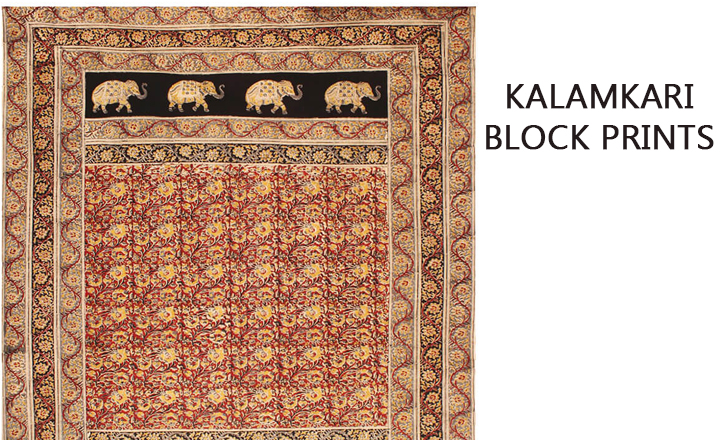Mystic Charm of Kalamkari

India, the land of arts and handicrafts needs no special introduction for the impressive variety of art works and craftsmanship. The name Kalamkari originates from the Persian words - qalam (pen) and kari (craftmanship), and it literally means drawing with a pen. Kalamkari represents the art of painting cotton fabrics with a kalam i.e. pen, involving a sharp pointed pierced bamboo regulating the flow of colour on the fabric.
The popularity of this special form of painting reached the shores of Andhra Pradesh in 17th and 18th centuries and the state is famous all over for Kalamkari block art. The major art forms are Srikalahasthi and Machilipatnam Kalamkari.
Srikalahasthi Kalamkari represents a style of Kalamkari work, related to the dyed hand-painting of fabrics, created predominantly in Srikalahasthi town in Chittoor district, Andhra Pradesh. It was registered for geographical indication under handicraft goods by the Geographical Indications of Goods (Registration and Protection) Act, 1999.
The Srikalahasthi Kalamkari process consists of more than 15 steps involving block making followed by cloth treating, printing, and washing etc. About 8 to 10 craftsmen are required for creating one yardage of Kalamkari fabric.
The highlight of this craft lies in the richness of these colours, produced as a result of natural dye absorption through a special mordant dyeing process. The Srikalahasthi style of Kalamkari is used for narrating stories from the epics through scrolls, temple hangings, and chariot banners.